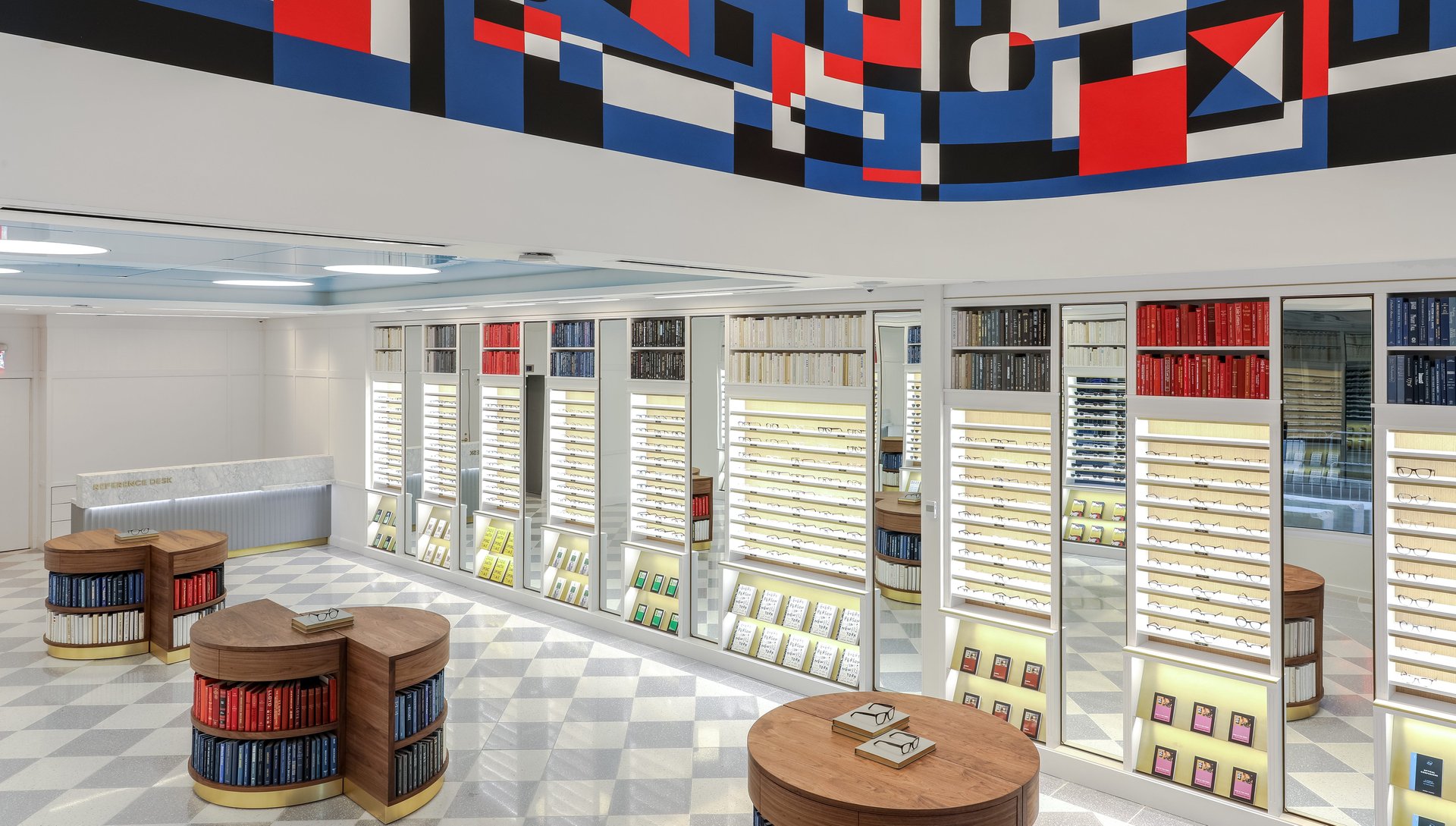Bookstores may be dying, but fashion brands are giving them new life
The future of brick-and-mortar bookstores has been in peril for at least a decade. But whether you’re actually shopping for a book or not, you might actually find yourself wandering into a bookstore by accident. Because fashion brands, from French icon Sonia Rykiel to New York City-based Warby Parker, are curating books not as objects to read but as objects of décor.


The future of brick-and-mortar bookstores has been in peril for at least a decade. But whether you’re actually shopping for a book or not, you might actually find yourself wandering into a bookstore by accident. Because fashion brands, from French icon Sonia Rykiel to New York City-based Warby Parker, are curating books not as objects to read but as objects of décor.
The past 12 months have confirmed that in the age of Amazon Prime shipping, retail real estate is not doing well. That’s why beauty startup Glossier, one of the most buzzy e-commerce companies, opened a concept shop, dubbed an “offline experience,” in November 2017, and Everlane, which pledged to never open a physical store in 2012, just opened a New York City flagship. Brick-and-mortar shops are data troves for brands to gain insight on exactly how customers interact with the products. And a good book will keep a customer in the store for longer.
So, it makes sense that books—the original immersive “offline experience”—are the hottest accessories to fashion brands these days. The Sonia Rykiel flagship on the Left Bank of Paris since 1990, just steps away from Les Deux Magots, a café frequented by literary legends like Simone de Beauvoir and Ernest Hemingway, has 50,000 books sitting on ceiling-to-floor shelves, their spines creating stripes reminiscent of Rykiel’s signature pattern. Books as décor has been a feature of the Sonia Rykiel brand since the late designer first set up shop in 1968. There is erotica by the dressing rooms and large, heavy coffee books used as accents.
“We need the history as much as we need the fashion,” the brand’s artistic director, Julie de Libran, explained of the shop’s book-lined décor. Rykiel stores in other locations, such as Tokyo, London, and New York, have also followed suit with these literary-inspired accents.
Sonia Rykiel does not sell these books, but you can buy books at Warby Parker and Club Monaco. At Club Monaco’s New York City Fifth Avenue flagship, you will find a flower shop (Putnam & Putnam), a coffee shop (Toby’s Estate), and a bookstore (Strand). “We wanted to create a space where you don’t just come to buy a sweater, but are getting an education on art and culture,” Allison Greenberg, director of marketing and communications, told the New York Times in 2013. “You can have a cup of coffee or sit in the library and read a great book that is relevant to the Flatiron district.” The Strand bookstore is a New York City cultural institution with which any brand looking to succeed in the city would be lucky to partner, with 18 miles of books in its original Union Square location. It is a rare powerhouse in the independent bookstore world, making a tidy side business curating book collections for private homes and businesses—like Club Monaco.
This month, Warby Parker, the chosen eyewear brand for writers and those who want to look like writers, opened up two new stores in New York City, including one in Rockefeller Center that features a Stuart Davis kaleidoscope mural, in homage to the art deco heritage of Radio City. Both of these locations prominently feature books as décor—and books for sale. The brand itself has a literary heritage, as the name comes from two Jack Kerouac lesser-known characters, Warby Pepper and Zagg Parker. Every new employee gets a copy of Kerouac’s novel, Dharma Bums, as a welcome gift. And since Warby Parker opened its first flagship store in New York City, you can ask for in-store book recommendation as easily as you can ask for eyewear consultations. Warby Parker is still primarily an e-commerce company, though.
‘It made sense to design our stores in a way that pays homage to great civic institutions like the New York Public Library,” co-founder and co-CEO Neil Blumenthal explained on the phone. There are color-coded books in blue and red that are selected to match the mural, and there are books for sale: Originals: How Non-Conformists Move the World by Adam Grant, a former professor of Blumenthal’s at Wharton, is a bestseller for the shops.
Of course the bookshelves are also useful for at least one other key task—to display eyewear. “[They] functionally enable us to provide glasses at eye level that are well lit so that way people can shop,” Blumenthal said. “There’s nothing worse than shopping in a store that’s poorly lit.” Or poorly read, for that matter.